With all of us practicing social distancing due to COVID-19, I want to share something you can pick up from the store and create at home — after washing your hands, of course. Remember when Lunchables were cool in grade school? Just as we’ve grown up, Lunchables have, too. Instead of eating small, slimy ham and cheese with cold crackers, we can — and we should — eat artisan meats and cheeses with elegant crackers.
Defined as the art of preparing and assembling cured meats, charcuterie has become the newest crowd-pleaser. Don’t be intimidated by the fancy name; charcuterie is just a board of meats, cheeses, and accompanying snacks.
But how do you make one? Since a good charcuterie spread demands the finest of meats and cheeses, I went to Harvest Market, one of C-U’s artisan groceries, to make my charcuterie board.
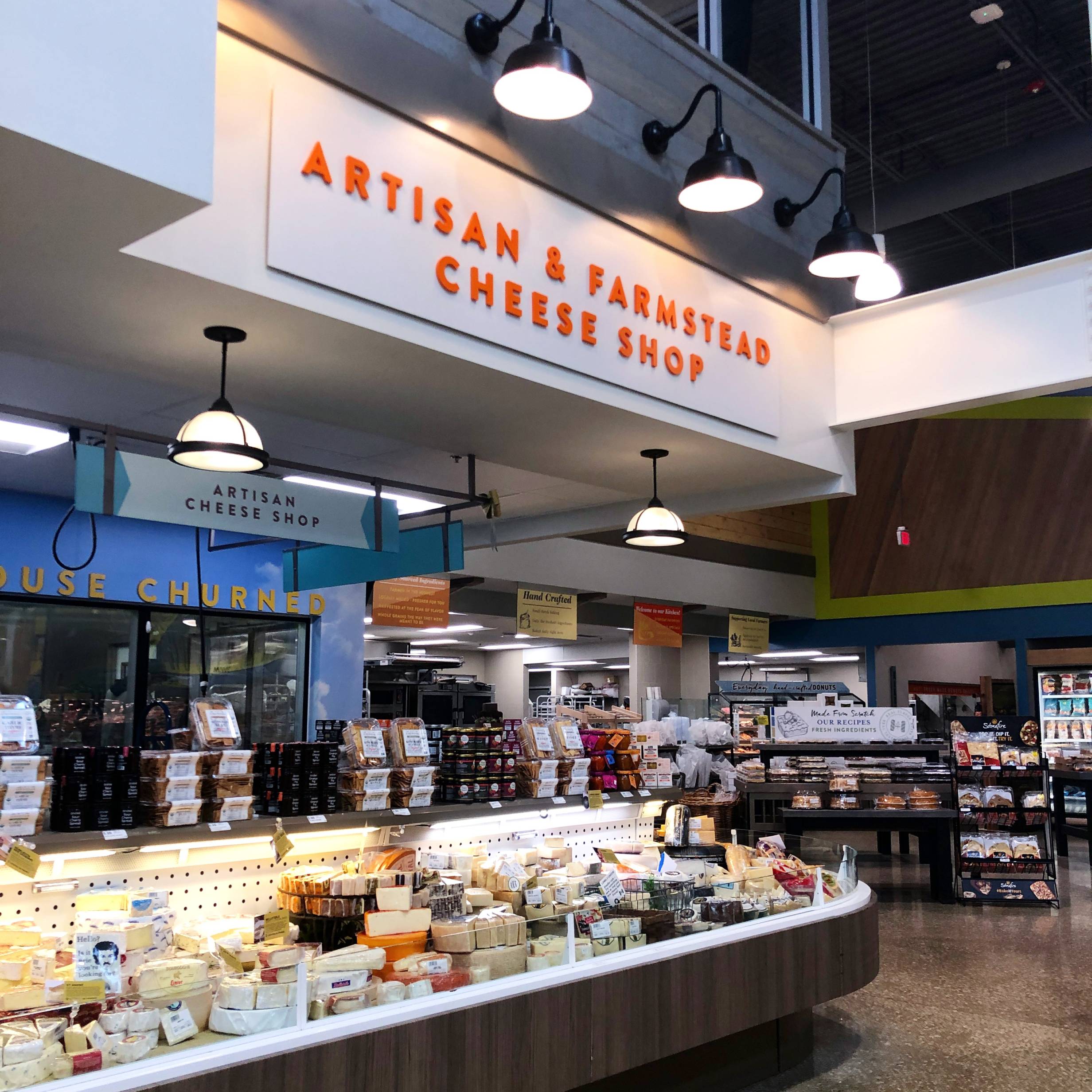
Harvest Market’s Cheese Shop. Photo by Alyssa Buckley.
Three to Four Cheeses
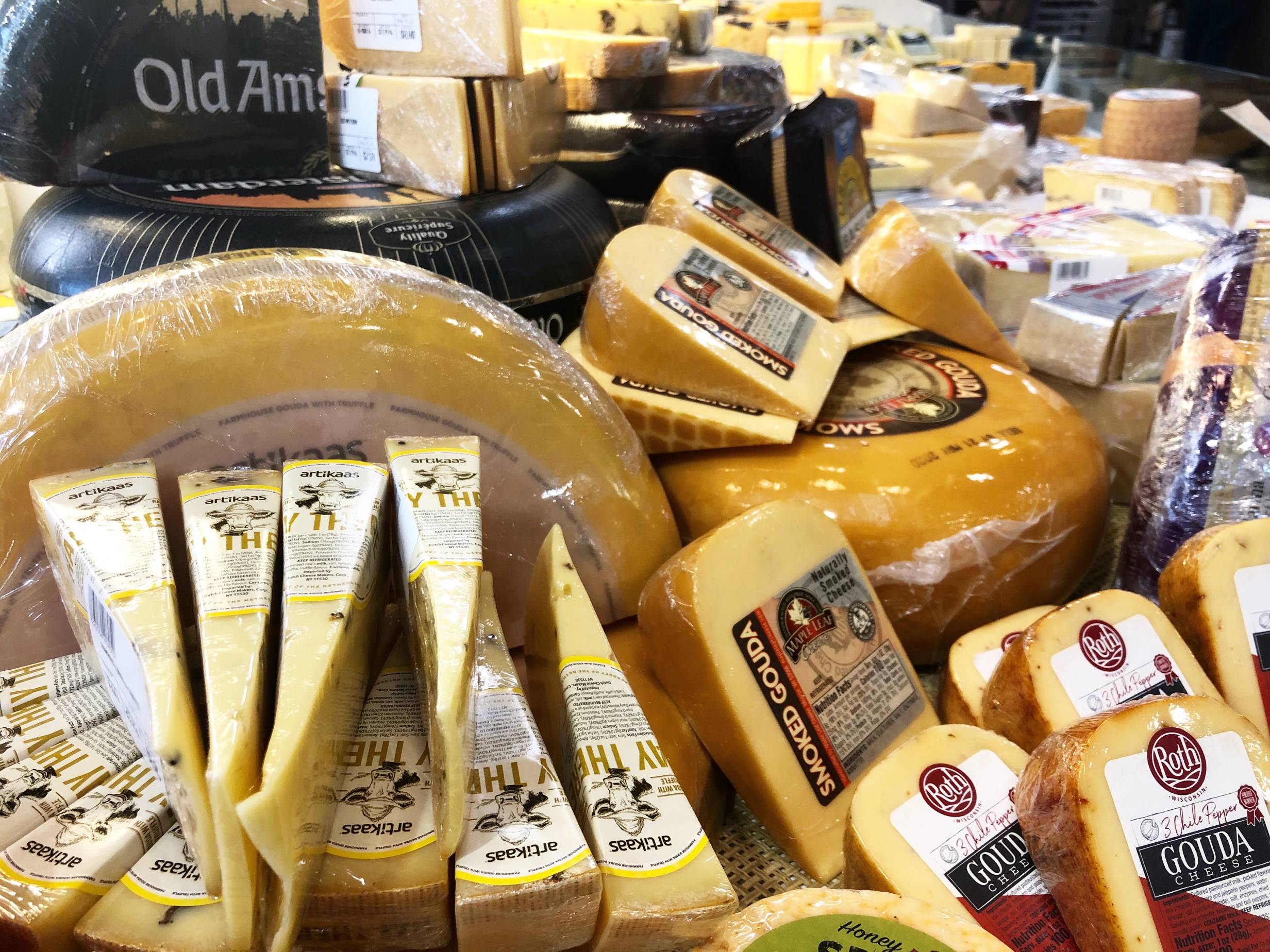
Cheeses. Photo by Alyssa Buckley.
To be able to offer a varied tasting experience, I like to find at least three different cheeses. I like to pick one soft cheese, one hard cheese, and one with an interesting detail.
For my soft cheese, I picked Fromager d’Affinois ($7.14), a French double cream light yellow cheese similar to Brie.
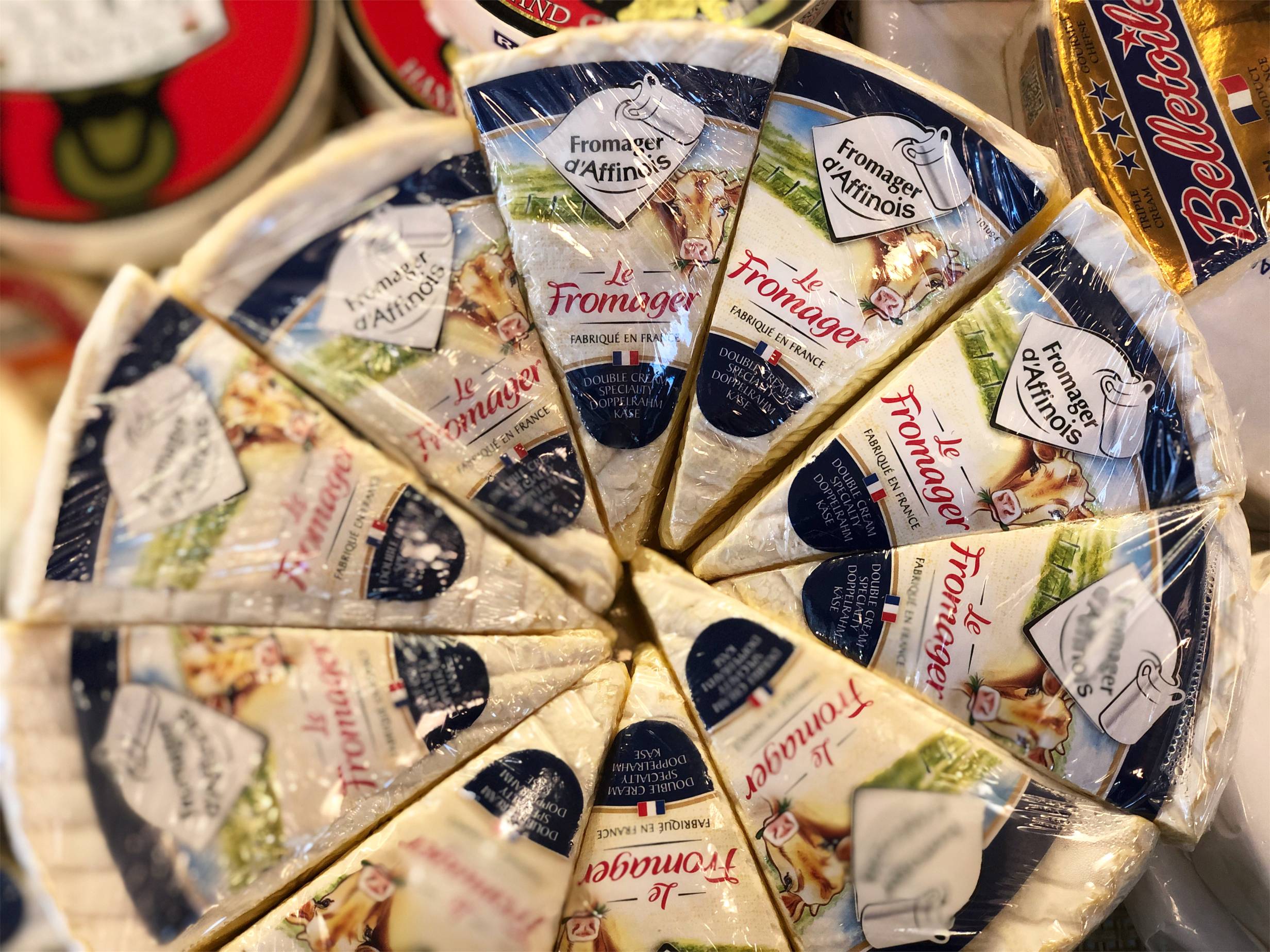
Fromager d’Affinois. Photo by Alyssa Buckley.
This cheese is a smooth, light cheese with the rind. When at room temperature, the middle is oozy and buttery. The rind is mild and earthy.
For a hard cheese, I picked Pecorino Romano ($7.11), similar in taste to a Parmesan, made from pasteurized sheeps milk.
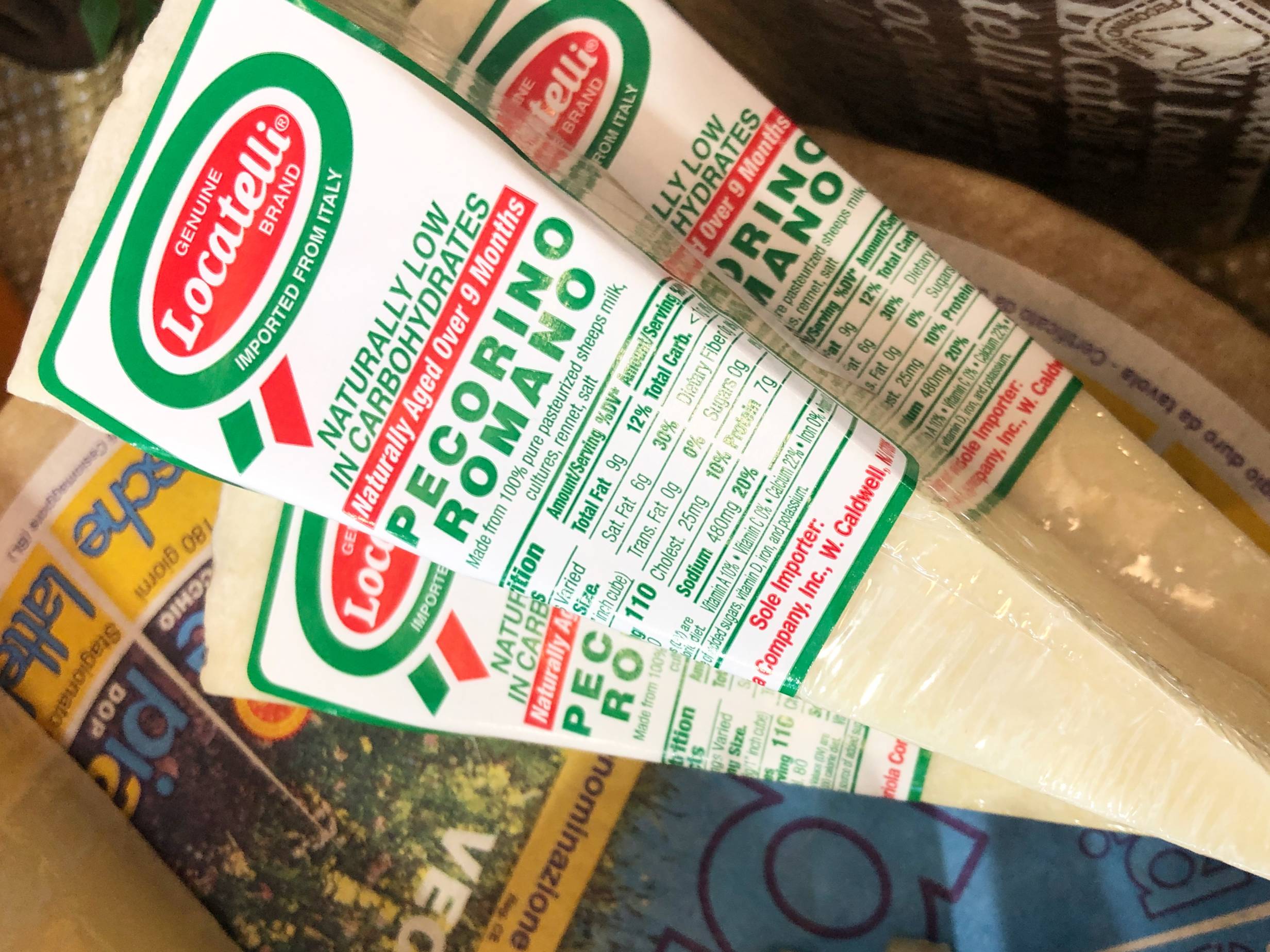
Pecorino Romano. Photo by Alyssa Buckley.
This Pecorino Romano is a strong, salty cheese. It crumbles easily, so I took care to cut the slices thick.
For an interesting cheese, I picked a black truffle Cheddar Gruyere ($5.99), a semi-hard cheese unique fusion of cheddar and gruyere with earthy Italian black truffles.
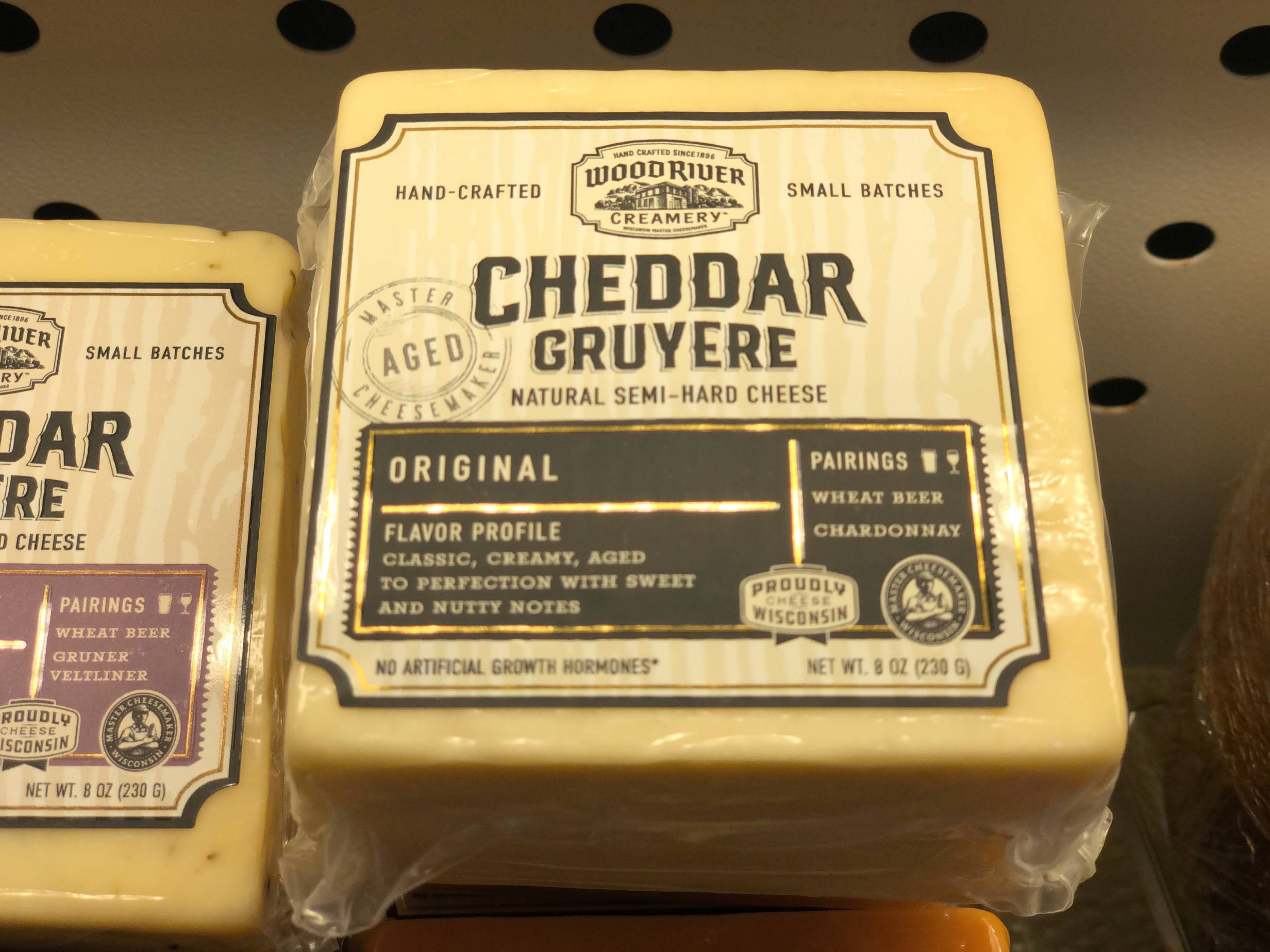
Cheddar Gruyere. Photo by Alyssa Buckley.
Because I was hungry, I picked a fourth cheese: Cahill’s Whiskey Cheddar ($5.39). This Irish cheese is a smooth, cow’s milk cheddar infused with Kilbeggan Irish whiskey.
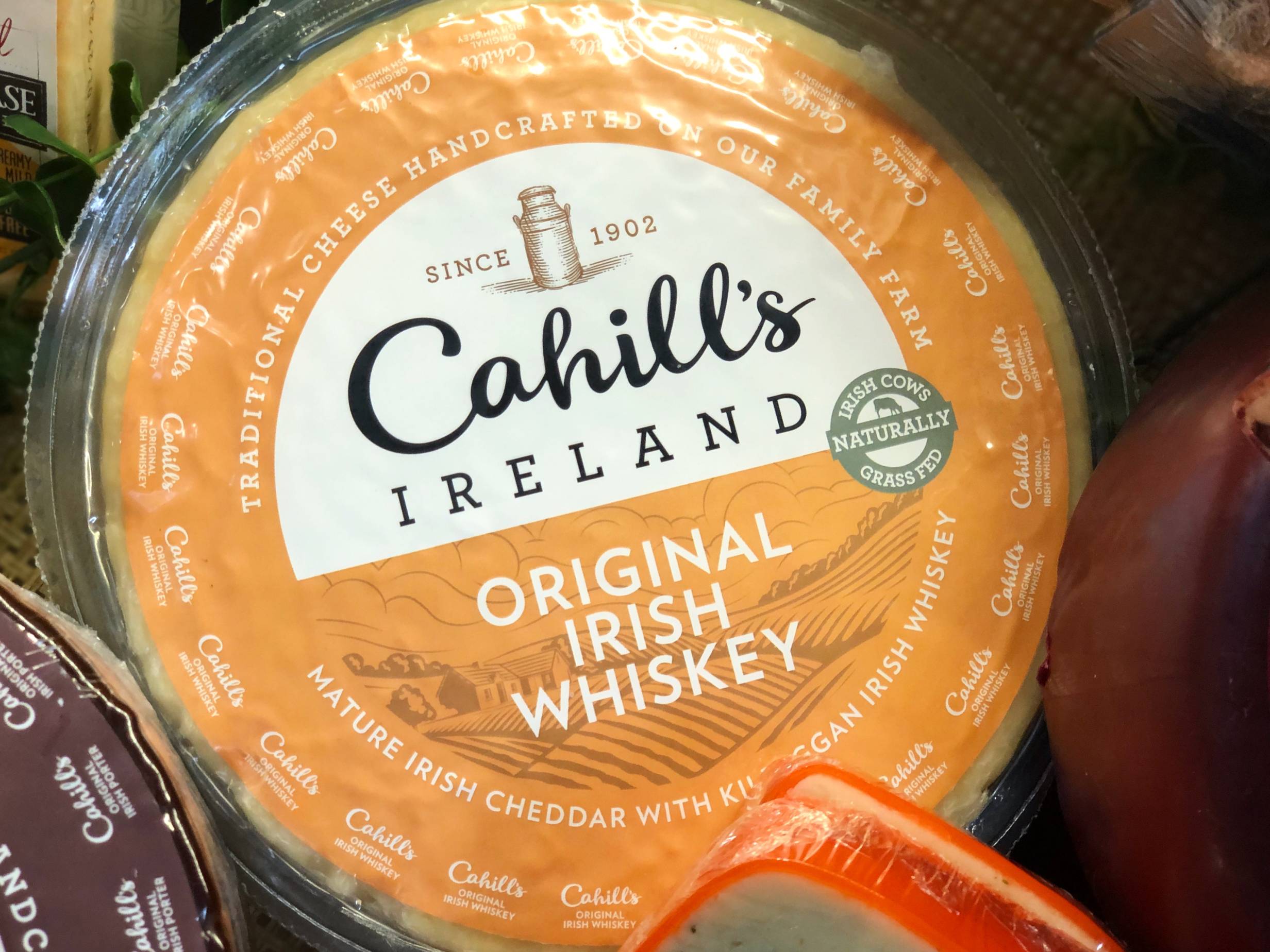
Cahill’s Irish Whiskey cheddar. Photo by Alyssa Buckley.
This cheese is a silky cheddar with very strong whiskey flavor. The boozy taste is not for everyone; the whiskey cannot be missed. If you like the caramel alcohol flavor of whiskey, you will love this cheese.
Two to Three Meats
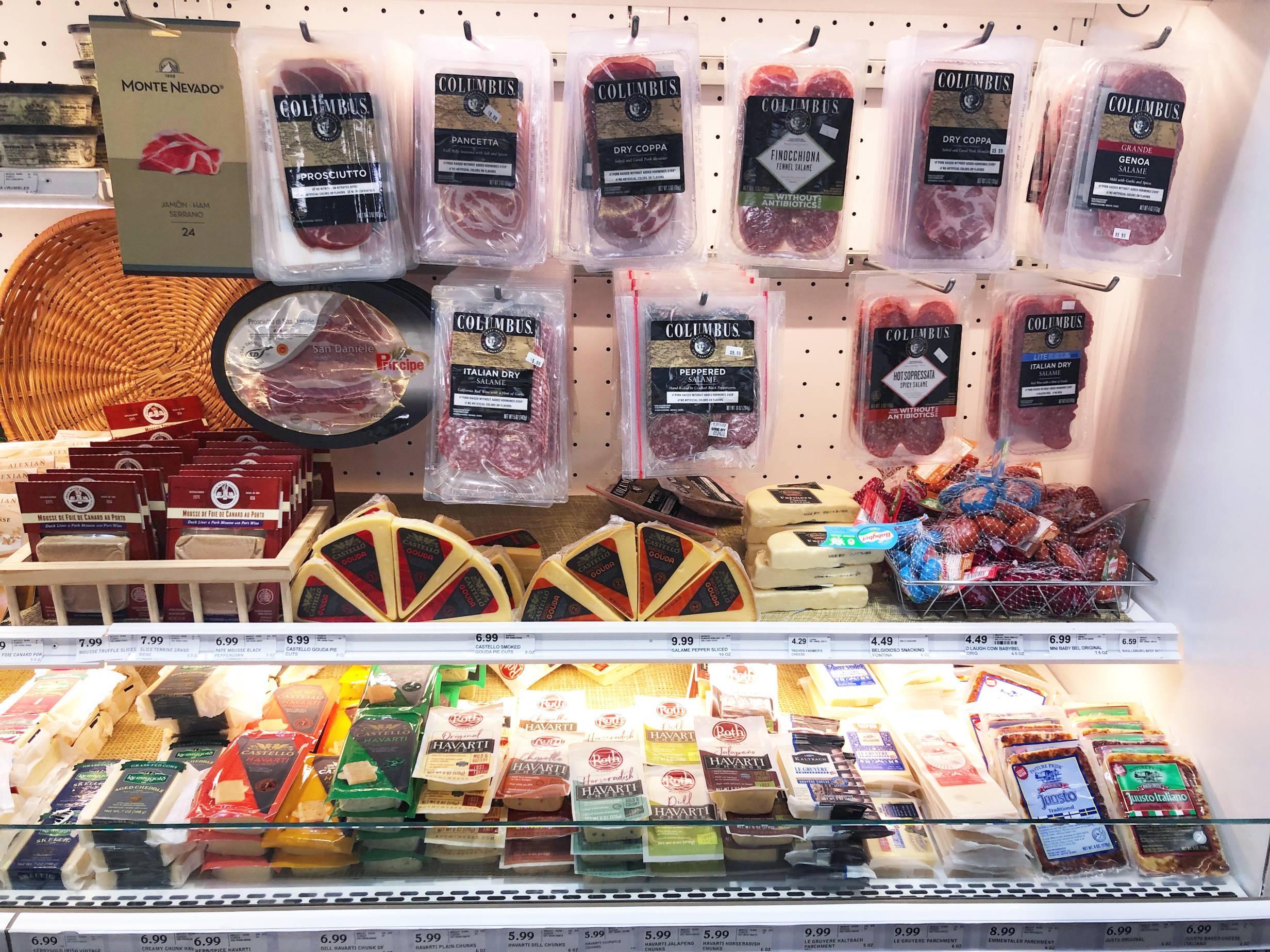
Cured meats. Photo by Alyssa Buckley.
Variety is the name of the game for charcuterie. I like to pick different kinds of meat to pair with the cheeses. Salami is a favorite for most, so I always include Genoa Salami ($5.99). It is a delicious, salty circle sliced from a cured sausage of dried pork.
For the other meat selections, take a look at what else is available and see what speaks to you. Prosciutto always speaks to me, so I picked that one up for $6.49. Proscuitto is an Italian dry-cured ham that is usually thinly sliced and served uncooked. The only ingredients in the proscuitto I picked up were pork and salt.
I picked up a package of Columbus brand Dry Coppa for $5.99 as well. Coppa is a cold cut pork, sliced thin with beautiful marbling, and — I dare say — more delicious than salami.
One to Three Fruits
The best fruit to pair with cheese is grapes on the vine. I wash my grapes in water (with a splash of apple cider vinegar) with the grapes still attached to the vine. When they are washed, I use scissors to cut small bunches off the vine, so each person grazing on the charcuterie board can pick up three to five grapes easily. Bonus: when I carry the delicious board of snacks for my guests, no grapes roll off.
Other fruits to pair with cheese and meats are blueberries, blackberries, apple slices, or strawberries. I give them a quick wash as well, and I put the berries on the board after the meat and cheese.
Two to Three Crackers
Carbs are an essential part of a charcuterie board. I prefer to buy special crackers for my charcuterie board, but you can use any crackers you might have in the pantry. For this board, I picked up a package of circle crackers and artisan rectangle crackers.
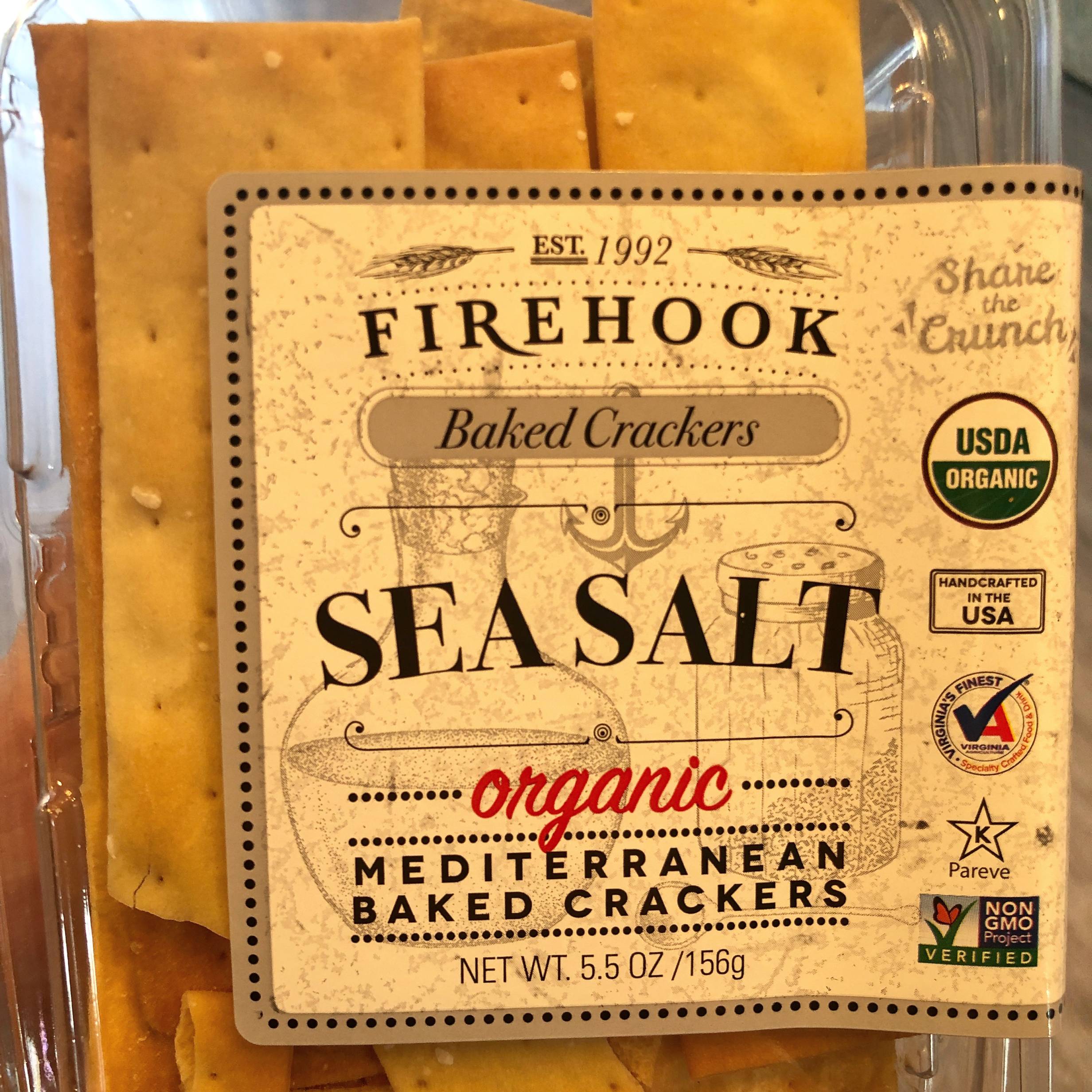
Artisan crackers. Photo by Alyssa Buckley.
If you ever have trouble selecting cheese, meat, or crackers, Harvest Market has dedicated employees in the Cheese Department that you can ask for advice. They will be able to recommend some excellent pairings and share details on which items are on sale.
Assembly of the charcuterie board
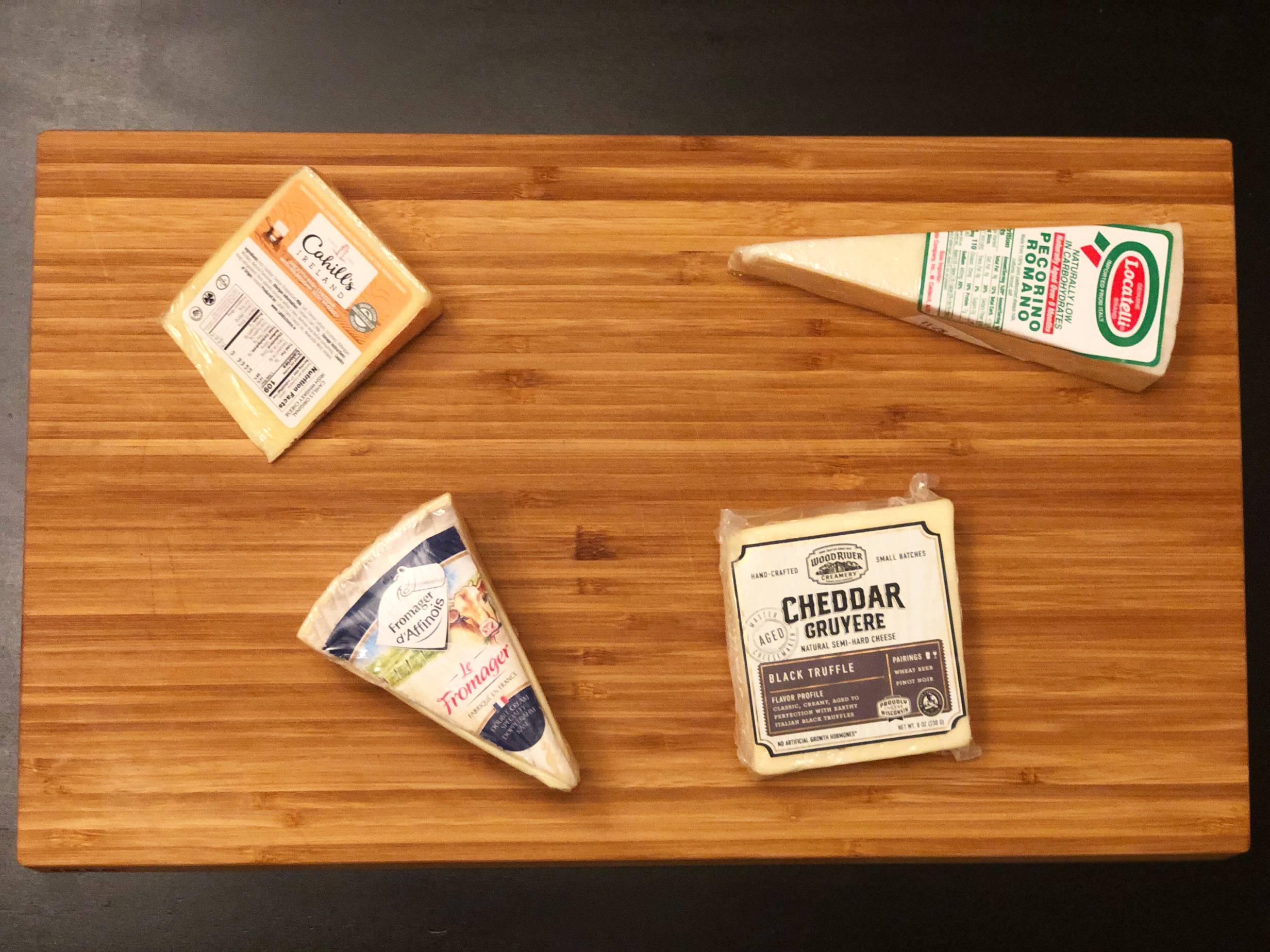
Assembly of cheese. Photo by Alyssa Buckley.
Once you have all your cheese, meat, fruit, and crackers, it’s go time! Start with the cheeses: unwrap and place them in different places on the board. I like to cut the hard cheese and the interesting cheeses: the hard cheese because it’s difficult to cut, and the interesting cheeses so they are enticing for people to try. Brie and other soft cheeses do not look beautiful when they’re cut, so I leave that cheese as a wedge with a small cheese knife.
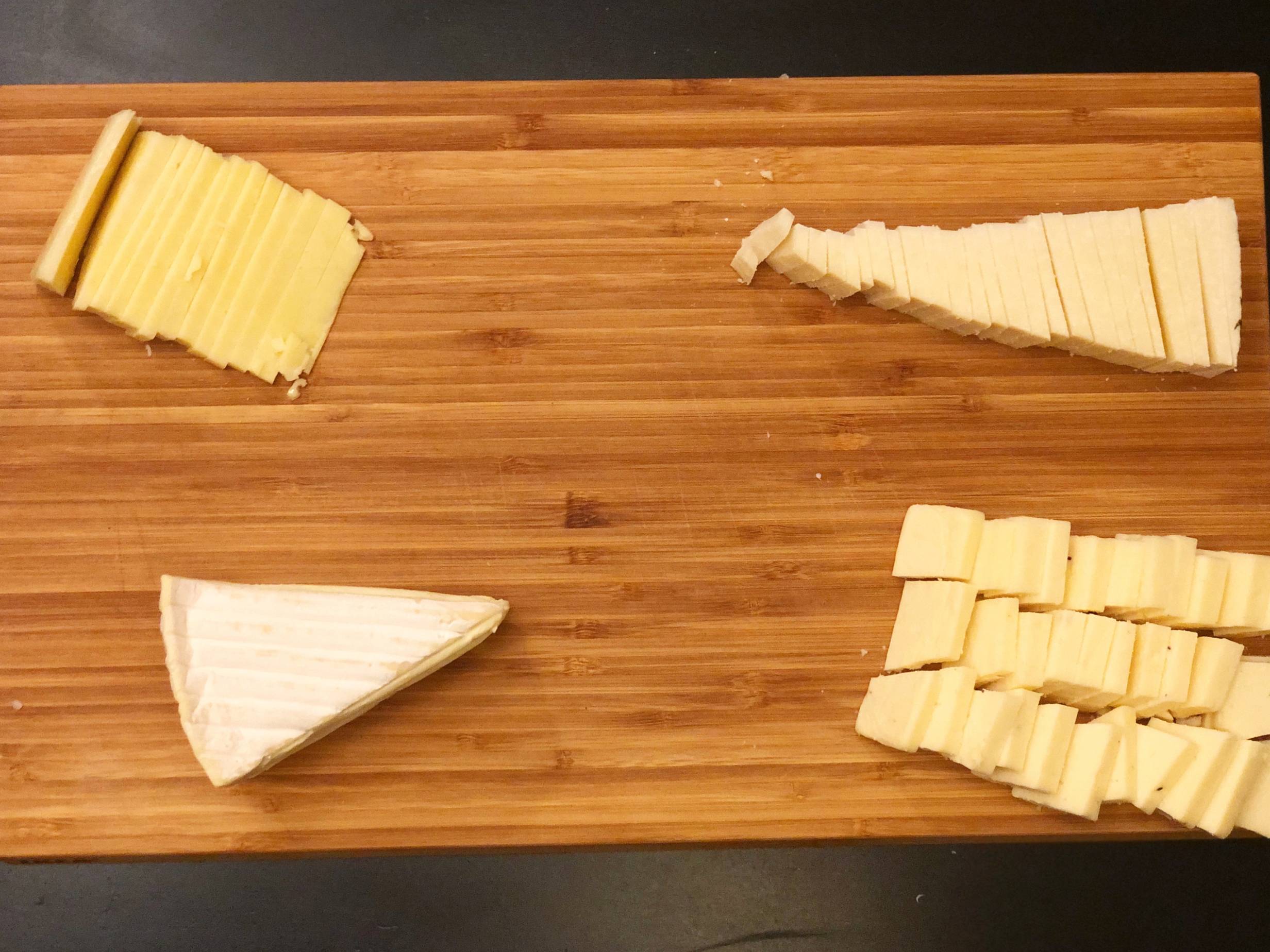
Cheese. Photo by Alyssa Buckley.
Next is the meats. I like to lay salami flat but fold the prosciutto and coppa so that they can be grabbed in one pinch. The different heights of the reddish meats makes the board visually appealing.
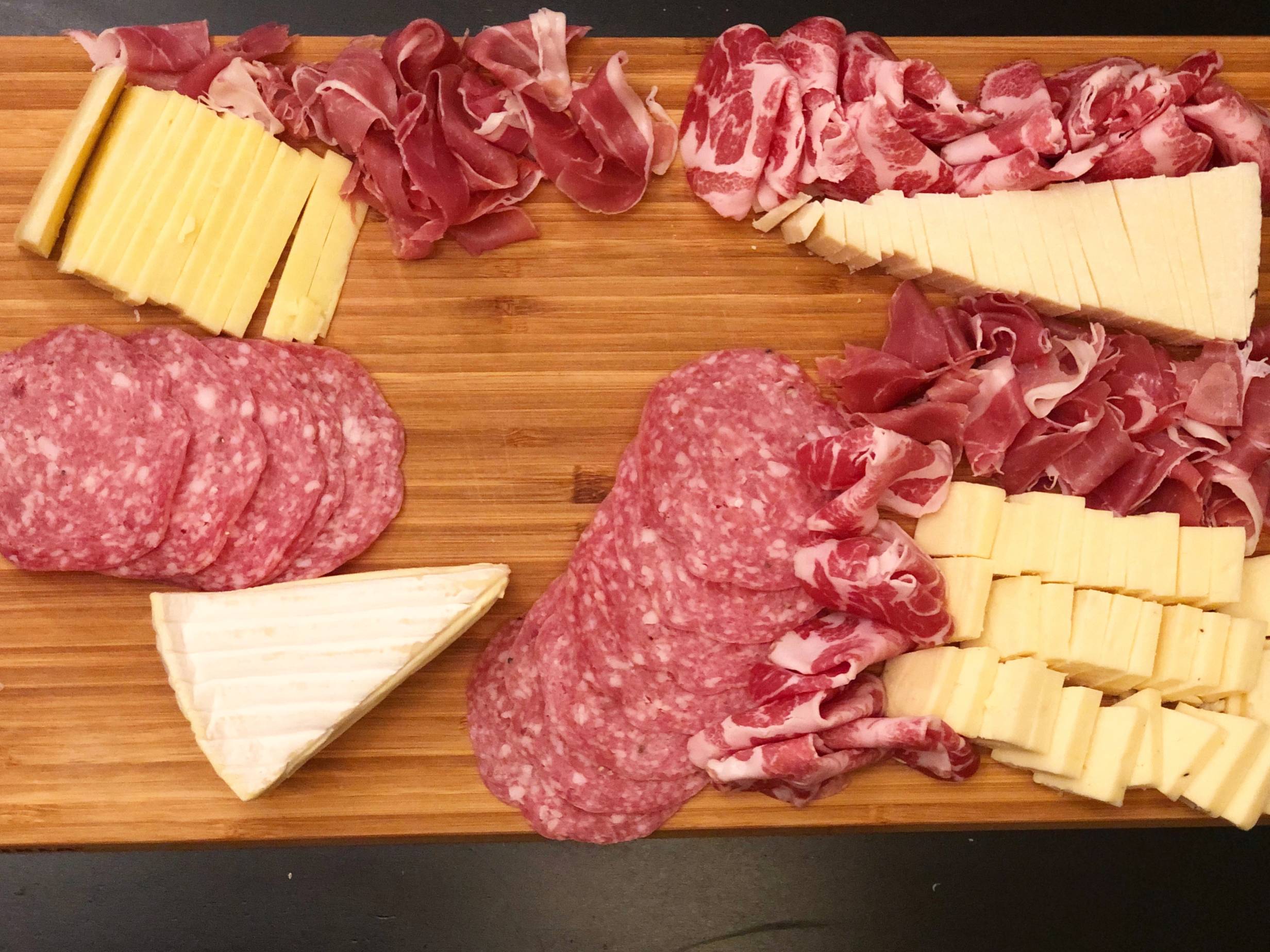
Meats and cheese. Photo by Alyssa Buckley.
Then, I squish the fruit wherever I can fit them between the meat and the cheese. A few in each open area. The medley of light colored cheese, red meats, and dark fruit make my heart sing.
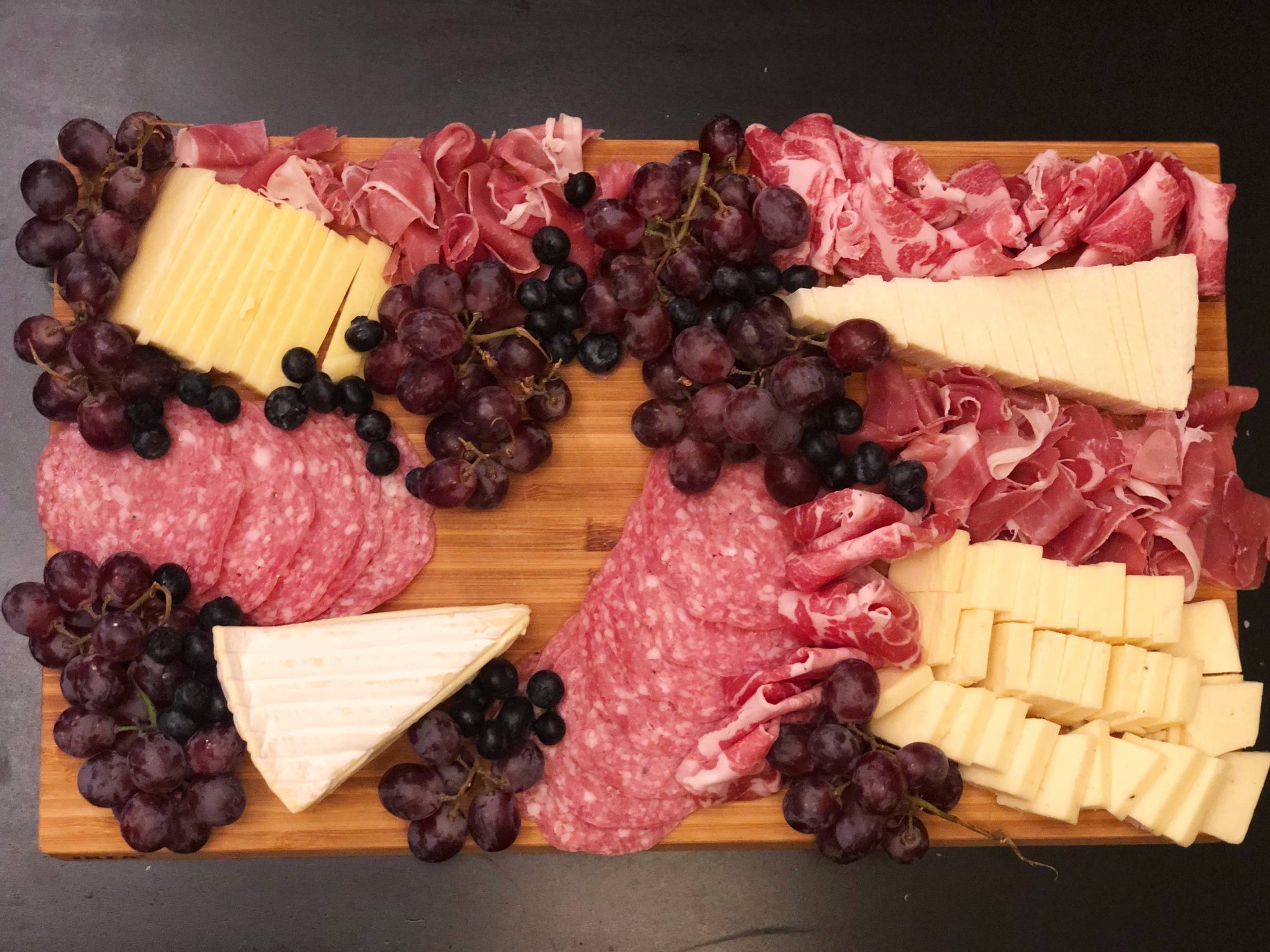
Meats, cheese, and fruit. Photo by Alyssa Buckley.
Last, add the crackers wherever there’s room. At this point, there isn’t much, so just make it work. Make sure there is fruit next to every wedge of cheese and crackers near each cluster of meat.
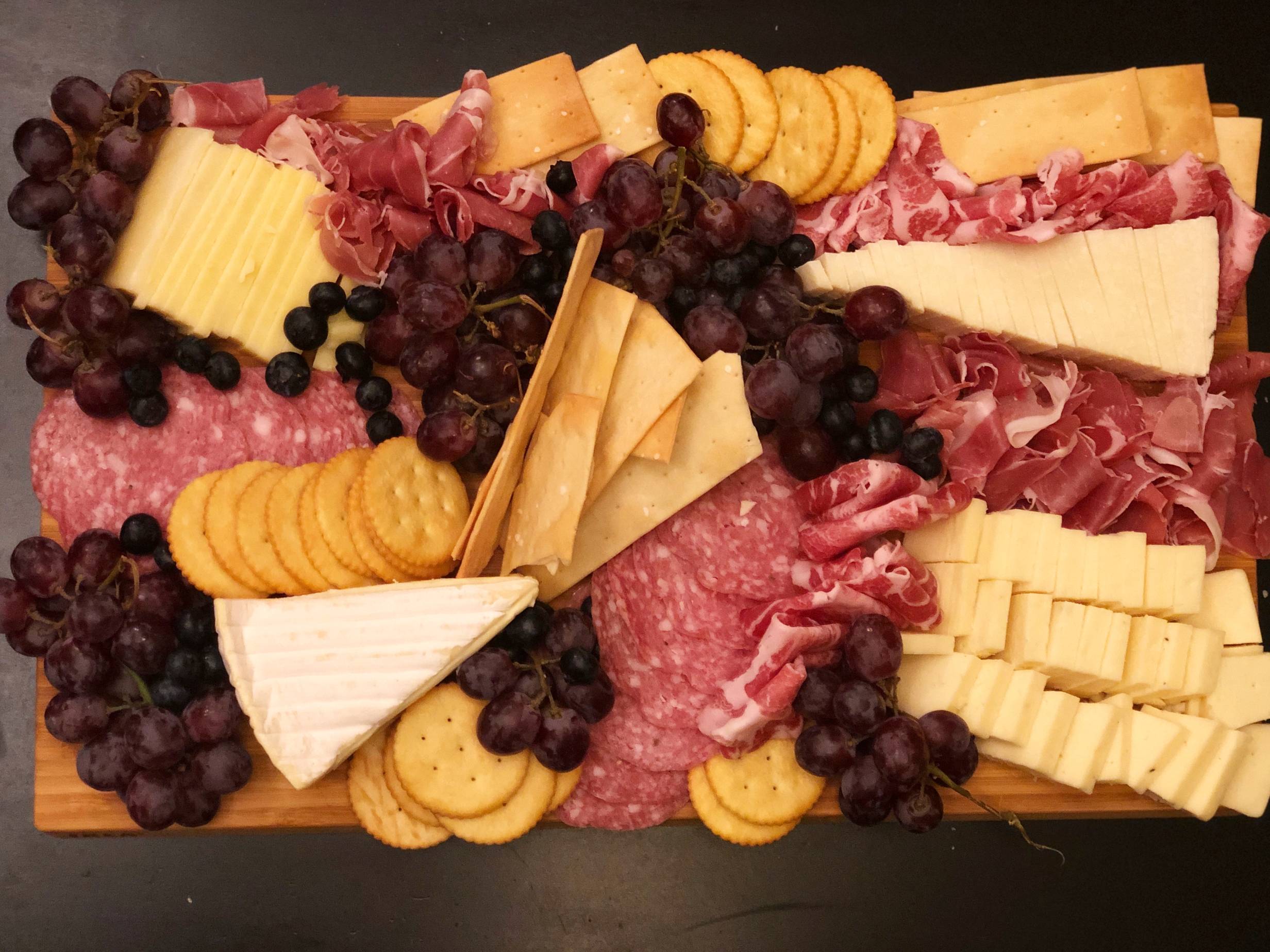
Finished charcuterie. Photo by Alyssa Buckley.
Viola! Charcuterie board is complete. Wash your hands and enjoy.
Harvest Market
2029 S Neil St
Champaign
6 a.m. to midnight daily








